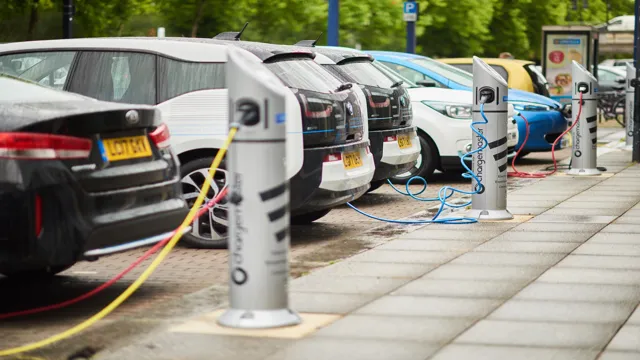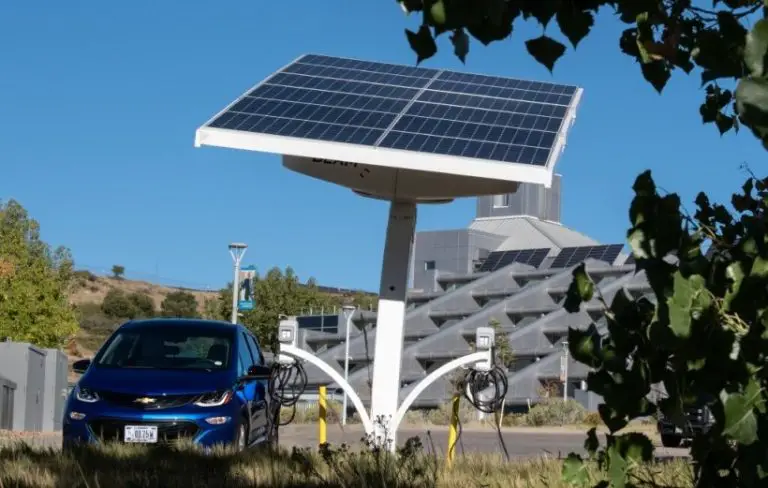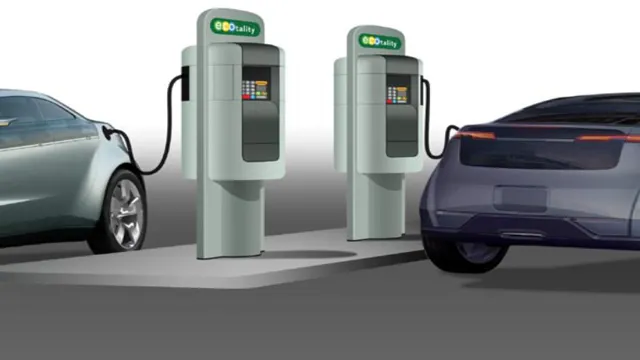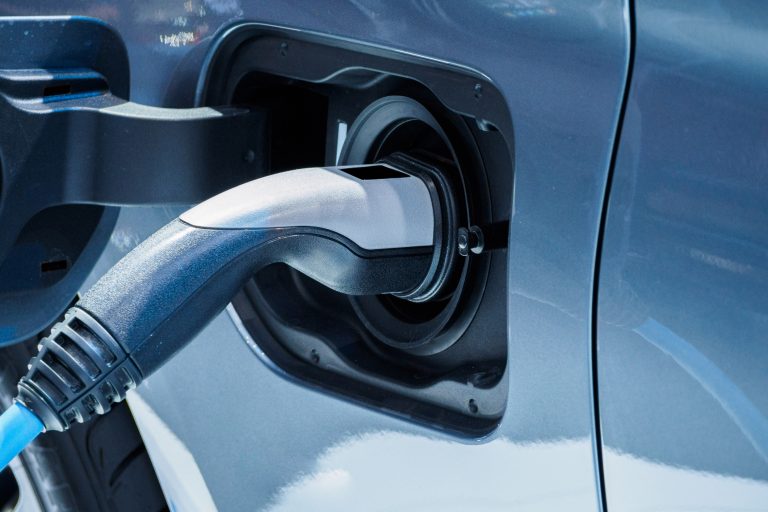Power Up Your Ride: The Future of Charging Infrastructure for Electric Cars
Electric cars are gaining popularity worldwide with their eco-friendly and cost-effective advantages, thus paving the way for the charging infrastructure for electric cars. With the increase in the number of electric cars, the need to build a comprehensive charging infrastructure network has become even more critical. The infrastructure niche is expanding as fast as electric vehicles offering charging solutions that satisfy customers and overcome the greatest challenge for EV owners: range anxiety.
This charging infrastructure network encompasses various charging stations such as Level 1, Level 2, and DC fast charging, and all of which have their unique features. Charging speeds can be inconveniently slow at Level 1(110v) which may take an entire day, or Level 2(240v) charging which takes hours, but it is practical to be carried out at home. DC fast charging that offers up to 80% in 30 minutes is a more viable option for long-distance travel.
Electric charging infrastructure for electric cars may require considerable investment upfront, but it promises a high return. With the continued advancements of electric cars, the world is gradually transforming towards eco-friendly transport options. The development of charging infrastructure for electric cars is central to this transformation.
It will offer financial and environmental benefits and remove the limitations that have hindered EV adoption. A robust charging network could provide a vital boost to the electric vehicle market and take electromobility to the next level.
Overview of the Current State of Charging Infrastructure
Charging infrastructure for electric cars has come a long way in recent years. With the rise in popularity of electric vehicles, an extensive network of charging stations has emerged across cities and highways. Today, there was a total of over 100,000 public charging stations worldwide, which is a significant milestone for the industry.
However, the current state of charging infrastructure still has some challenges to overcome. Many of the stations are slow charging, taking around four hours to fully charge a vehicle, while fast-charging options are still scarce. Besides, there are not enough charging stations in rural areas, making long driving distances difficult.
These issues need to be addressed to further promote the adoption of electric vehicles, which will undoubtedly play a vital role in reducing pollution and mitigating climate change.
Number of Charging Stations
The number of charging stations for electric vehicles has been steadily increasing in recent years, signaling a shift towards more sustainable transportation options. As of 2021, there are over 118,000 public charging stations in the United States alone, with more being added every day. This growing infrastructure is making it easier for EV drivers to travel longer distances and alleviating range anxiety.
However, there are still areas with limited charging options, particularly in rural or remote locations. Nevertheless, the overall trend towards electrification means that the number of charging stations is likely to continue to rise, bringing us closer to a fully sustainable transportation future.
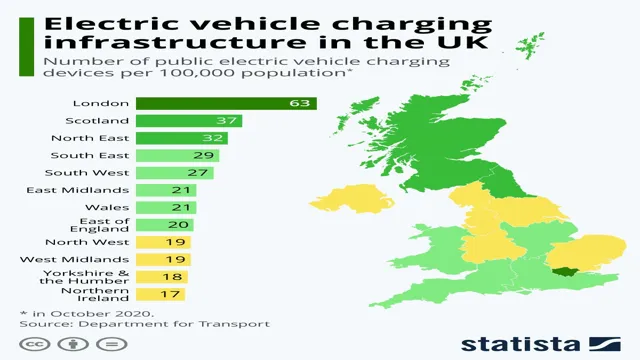
Average Charging Times
When it comes to electric vehicles, a major concern for drivers is the average charging time. Luckily, the current state of charging infrastructure has improved greatly in recent years and is continuing to expand. On average, it takes about 30 minutes to reach an 80% charge using a fast charger.
However, this time can vary depending on the model of the vehicle, the battery capacity, and the charging station’s power output. It’s important to note that not all charging stations are created equal. Some stations offer slower charging speeds, while others can provide a full charge in under an hour.
Additionally, there are different types of charging connectors that can affect the charging time. While it may take some time to get used to the charging system, advancements in the technology are making it easier and more convenient for EV drivers to stay charged on the road.
Distribution of Charging Stations Across Cities and Countries
Currently, the distribution of charging stations across cities and countries varies greatly. Some areas have a robust charging infrastructure, while others are still in the early stages of development. In the United States, California has the highest number of public charging stations, followed by Texas and Florida.
Europe, on the other hand, has a more evenly distributed charging infrastructure, with countries like Norway, the Netherlands, and Germany leading the way. However, even in these countries, the number of charging stations is not uniform – urban areas tend to have more stations than rural areas. The growth of EV adoption is driving the expansion of charging infrastructure, and many governments and private companies are investing heavily in building more charging stations.
Despite the variations in distribution, the overall trend is towards a more connected and accessible charging network that will make it easier than ever to travel in an electric vehicle.
Benefits of Increasing Charging Infrastructure
Electric cars are becoming increasingly popular and necessary in today’s world, with a growing focus on environmental sustainability and reducing carbon emissions. Increasing the charging infrastructure for electric cars has many benefits, including reducing range anxiety and making it more convenient for drivers to charge their vehicles. With more charging stations available, drivers have the peace of mind that they can easily find a place to charge their car, allowing them to plan their trips without worrying about running out of battery power.
Additionally, increasing the charging infrastructure promotes the widespread adoption of electric vehicles, as it makes it more appealing and accessible for individuals to switch from gasoline-powered cars. This, in turn, leads to a reduction in harmful emissions and a cleaner, more sustainable environment. Moreover, developing a robust charging infrastructure also creates job opportunities and drives economic growth in the clean energy sector.
Overall, focusing on the development of charging infrastructure for electric cars can have a significant positive impact on individuals, communities, and the environment.
Reducing Range Anxiety
Electric cars have revolutionized the automotive industry with their eco-friendly nature. However, one of the biggest challenges electric car owners face is the fear of running out of power mid-journey, commonly known as range anxiety. This is where charging infrastructure comes into play.
By increasing the number of charging stations, electric vehicle drivers can travel longer distances without worrying about running out of power. This not only reduces range anxiety but also encourages more people to switch to electric cars, leading to a significant reduction in carbon emissions. Imagine driving on a long journey, knowing that every few miles, you have access to a charging station to top up your battery.
It is like having a gas station at every corner. This would make electric cars more accessible and convenient, leading to a more sustainable future.
Encouraging More Consumers to Switch to Electric Cars
One of the biggest hurdles to widespread adoption of electric vehicles is the lack of charging infrastructure. However, increasing the number of charging stations can have a number of positive effects. Firstly, it can alleviate range anxiety for drivers, as it enables them to travel longer distances without needing to worry about running out of charge and being stranded.
Secondly, it can reduce wait times at charging stations. As more charging stations are added, there will be less competition for each one, resulting in faster charging and less time spent waiting. This can make electric cars a more attractive option for busy individuals who don’t have a lot of time to spare.
Finally, it can help to reduce emissions and improve air quality, as more people switch to electric vehicles and rely less on fossil fuels. By focusing on increasing infrastructure, we can encourage more people to make the transition to electric cars and reap the many benefits they offer.
Boosting Local Economies through Increased Tourism
Increasing the number of charging stations in tourist destinations has significant benefits for local economies. With more electric vehicles on the road, it’s important to have charging infrastructure in place to encourage visitors to explore the area without worrying about running out of charge. By investing in charging stations, local businesses can attract more eco-conscious consumers who are actively seeking destinations with sustainable transportation options.
Moreover, visitors with electric cars tend to spend more time in the area as they wait for their vehicle to charge, resulting in increased sales for local shops and restaurants. Installing charging stations can also create job opportunities for local residents through construction, maintenance, and management of the infrastructure. Overall, increasing charging infrastructure in tourist destinations has the potential to boost the local economy, create jobs, and promote sustainable transportation options.
Challenges and Solutions for Expanding Charging Infrastructure
Expanding charging infrastructure for electric cars presents some serious challenges, but solutions are available to address them. One of the biggest challenges is managing the burstiness of charging demands, especially during peak periods. This requires a balance between the number of charging stations and the availability of charging power.
Some solutions include the use of dynamic pricing and demand response programs to encourage drivers to charge during off-peak hours. Additionally, the proliferation of charging stations along major highways and in parking lots can help reduce the likelihood of congestion and long wait times. Another challenge is the perplexity of charging standards and charging networks.
Different vehicles require different charging protocols, and drivers need to be able to access charging stations regardless of the network they belong to. To tackle this, companies are working to establish interoperability standards and increase access to roaming agreements. Despite these challenges, the expansion of charging infrastructure is critical to the wider adoption of electric vehicles, and the solutions available provide a promising way forward.
High Cost of Installation and Maintenance of Charging Stations
The high cost of installation and maintenance of charging stations is one of the biggest challenges in expanding the infrastructure for electric vehicles. Setting up a charging station involves complex installation procedures, which require significant investments in equipment and energy infrastructure. Additionally, regular maintenance is essential to ensure smooth operation of the charging stations.
However, these costs can be reduced through innovative solutions such as the use of solar-powered charging stations. These stations can generate electricity from renewable sources and store it, reducing the cost of energy consumption and maintenance. Furthermore, collaborative efforts between governments, private companies and communities can help to lower the cost of infrastructure development, making it financially viable for widespread adoption of electric vehicles.
By working together, we can create a more sustainable future for transportation.
Limited Availability of Public Spaces for Installing Charging Stations
One significant challenge facing the expansion of electric vehicle (EV) charging infrastructure is the limited availability of public spaces for installing charging stations. With the rising demand for EVs, there is a pressing need for more charging stations to be installed in public areas such as parking lots and shopping centers. However, finding suitable locations can be challenging, especially in densely populated urban areas where space is already scarce.
Despite this challenge, some effective solutions can help overcome this issue. For instance, partnerships between governments, private entities, and EV manufacturers can play a crucial role in expanding charging infrastructure. Such partnerships can facilitate the installation of charging stations on public land and incentivize private companies to set up charging stations on their premises.
Another solution is the utilization of existing infrastructure, such as lampposts and streetlights, for charging purposes. By retrofitting these structures with EV charging units, the limited space can be used more efficiently, and the charging infrastructure can be expanded with minimal disruptions to the urban landscape. Overall, although the limited availability of public spaces for installing charging stations is a significant challenge facing the expansion of EV charging infrastructure, creative and innovative solutions are available.
With continued efforts and collaborations, we can make charging stations accessible to more EV owners and drive towards a greener future.
Need for a Standardized Charging System
As the electric vehicle market grows, so does the need for a standardized charging system. One of the main challenges is the inconsistency in charging stations, resulting from different manufacturers that offer varied charging system models. This can cause confusion for EV drivers, leading to incorrect usage or even damage to the vehicle.
A standardized charging system would ensure that all EVs can be charged safely and more conveniently, regardless of the charging station’s location or model. There are already proposals for standard charging interfaces, with the CCS (Combined Charging System) and CHAdeMO being the most widely used. However, until a universally accepted standard is implemented, the expansion of charging infrastructure will continue to face obstacles.
Companies and governments need to work together to facilitate the widespread adoption of a standardized charging system that accommodates all EVs on the market.
Future of Charging Infrastructure
The future of charging infrastructure for electric cars is looking bright. As more and more drivers make the switch to electric vehicles, the demand for reliable and convenient charging stations has skyrocketed. To meet this demand, governments and private companies alike are investing heavily in the development of new charging technologies and infrastructure.
This means more charging stations in convenient locations like shopping centers, workplaces, and apartment complexes, as well as faster and more efficient chargers that can fully charge a car in just minutes. The result will be a future where electric car drivers can travel longer distances with ease and without the worry of running out of power. So if you’re thinking about making the switch to an electric car, don’t let worries about charging infrastructure hold you back – the future is looking bright for electric vehicles and their drivers.
Advancements in Wireless Charging Technology
Wireless Charging Technology The future of charging infrastructure is looking increasingly bright due to the rapid advancements in wireless charging technology. Imagine never having to plug in your phone or laptop again – that is the promise of wireless charging. The convenience and simplicity of being able to charge our devices effortlessly is becoming a reality thanks to the rapid evolution of wireless charging technology.
Not too long ago, wireless charging was a slow and inefficient process, but today it is much faster, more efficient, and widely available. The technology has developed to a point where it can provide lightning-fast charging speeds, preventing the need for multiple charging cables and reducing clutter, making life easier for everyone. The wireless charging market is expected to continue to grow, leading to an increasingly widespread adoption of wireless charging as a primary charging method.
It is clear that wireless charging is changing the charging infrastructure as we know it, and it is exciting to see where it will go in the future.
Increased Integration with Renewable Energy Sources
As the world transitions towards more renewable energy sources, an increased integration with charging infrastructure is essential. Electric vehicle charging stations must become more sustainable and efficient, as they’re a critical link between renewable energy sources and electric vehicles. With the rise of electric vehicles, we can’t afford to continue relying on traditional energy sources that contribute to carbon emissions and other harmful pollutants.
Therefore, the future of charging infrastructure lies in the incorporation of renewable energy sources such as solar and wind power. These energy sources will drive sustainable development, while simultaneously reducing greenhouse gas emissions. Just imagine, charging your electric vehicle with 100% renewable energy could soon become a reality! The development and implementation of more eco-friendly charging infrastructure will undoubtedly help pave the way for a cleaner, greener future.
Potential for Incorporating Charging Stations into Smart City Infrastructure
The future of charging infrastructure is looking bright due to the potential for incorporating charging stations into smart city infrastructure. This could mean that electric vehicle owners will be able to find charging stations more easily while living in cities equipped with these charging points. The convenience of having charging stations integrated into urban design will also encourage more people to switch to electric vehicles.
The benefits of such a system will extend beyond just EVs though, as the infrastructure created will also lay the foundation for integrating more efficient and environmentally friendly transport systems. The incorporation of charging stations into smart city infrastructure may also contribute to reducing the carbon footprint of our cities. This will ultimately improve air quality and help us move towards a more sustainable way of living.
Conclusion
As electric cars are becoming increasingly popular, the importance of charging infrastructure cannot be overlooked. It’s like having a fancy phone with a dead battery, without charging points in place, your ride will come to a halt. Therefore, we need to invest in charging infrastructure as much as we invest in purchasing electric cars.
After all, charging your car should be as easy and accessible as charging your phone!”
FAQs
What is charging infrastructure for electric cars?
Charging infrastructure refers to the network of charging stations and equipment needed to charge the batteries of electric vehicles.
How does the charging infrastructure for electric cars work?
Charging infrastructure for electric cars uses either AC or DC power to charge the vehicle’s battery. The charging station plugs in the car, and the electricity flows to the battery to charge it.
How fast can electric cars be charged with the current infrastructure?
The charging speed of electric cars depends on the type of charging station and the car’s battery capacity. Fast charging stations can charge up to 80% of the battery in 30 minutes, while slower stations can take up to 8 hours.
What are the challenges in expanding the charging infrastructure for electric cars?
The main challenges in expanding the charging infrastructure for electric cars are high upfront costs, lack of standardization, and limited public funding. Coordination between different stakeholders and government policies can also affect the development of charging infrastructure.
